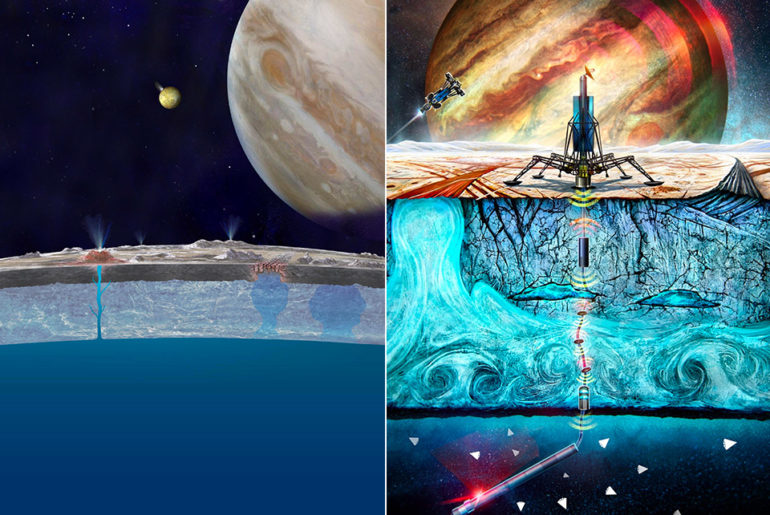
NASA’s Sensing With Independent Micro-Swimmers (SWIM) robots, designed by Ethan Schaler, could one day be used to explore Jupiter’s icy moon Europa and other worlds as well like Ganymede. SWIM would be much smaller than previous planetary ocean exploration robots, which enables them to be easily loaded compactly into an ice probe.

Since a number of them can be loaded into a single ice probe, these robots may increase the likelihood of detecting evidence of life while assessing potential habitability on a distant ocean-bearing celestial body. More specifically, the wedge-shaped robots each measure about 5 inches (12 centimeters) long and about 3 to 5 cubic inches (60 to 75 cubic centimeters) in volume.
- COMPUTERIZED STAR LOCATING TELESCOPE: The Celestron NexStar 127SLT offers a database of more than 40,000 stars, galaxies, nebulae, and more. Simply...
- MAKSUTOV-CASSEGRAIN OPTICAL DESIGN: With a large, 127mm aperture, the NexStar 127SLT can gather enough light to see our Solar System and beyond. View...
- COMPACT AND PORTABLE: The ideal telescope for adults and kids to use together, the NexStar 127SLT is compact, lightweight, and portable. It's easy to...
My idea is, where can we take miniaturized robotics and apply them in interesting new ways for exploring our solar system? With a swarm of small swimming robots, we are able to explore a much larger volume of ocean water and improve our measurements by having multiple robots collecting data in the same area,” said Ethan Schaler, a robotics mechanical engineer at NASA’s Jet Propulsion Laboratory.





